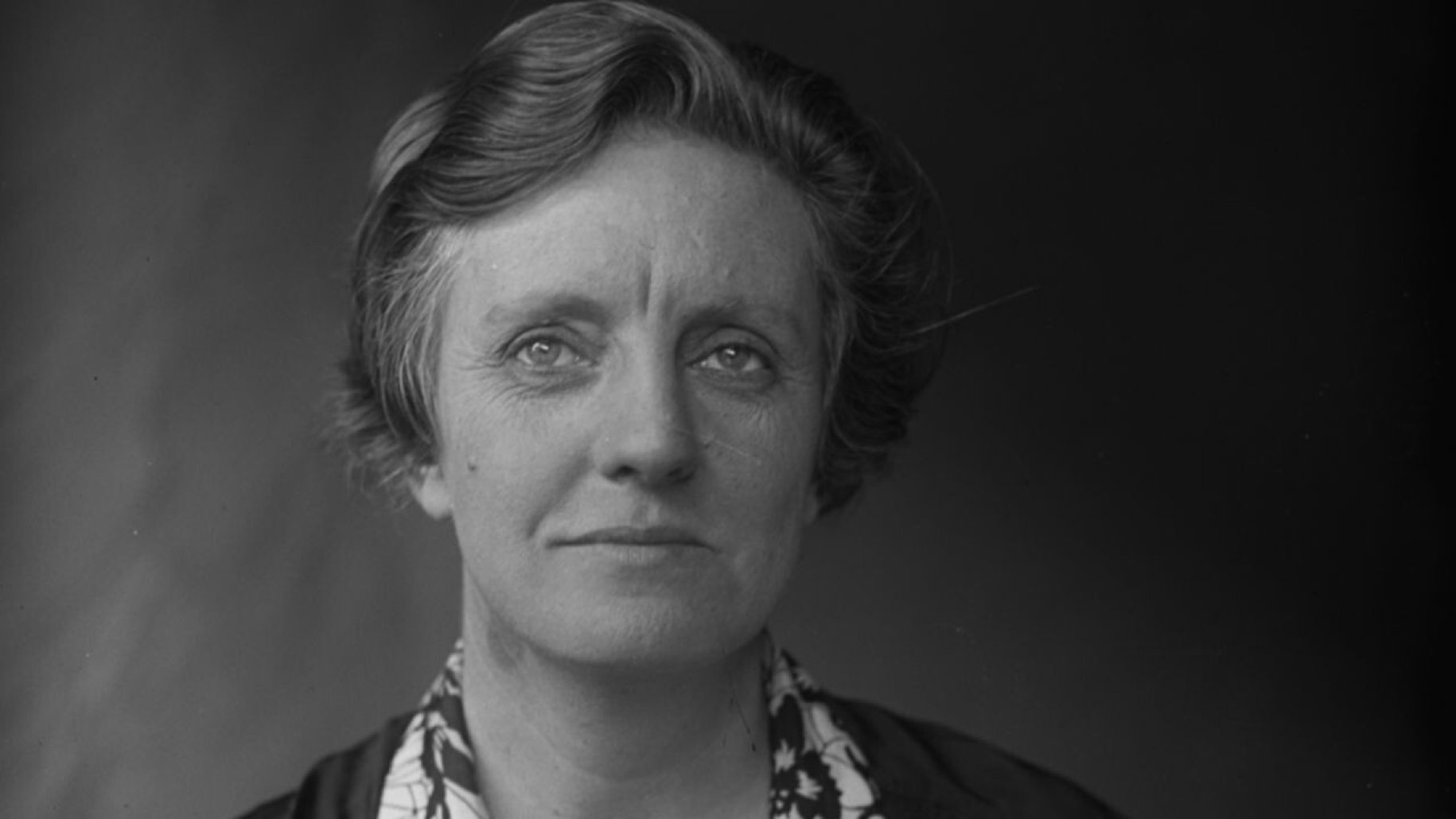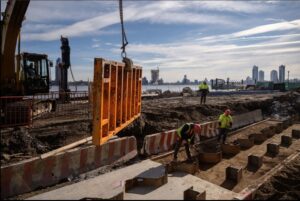Editor’s Note: Allison Gilbert is the co-author with Julia Scheeres of “Listen, World!,” the first biography of nationally syndicated newspaper columnist Elsie Robinson. Follow her at @agilbertwriter. The views expressed in this commentary are the author’s own. View more opinion at CNN.
A confession: When I first read the private letters between American writer Elsie Robinson and her boss, William Randolph Hearst, I gasped. Here, typed in 1940, on pages marked “confidential,” was proof of Robinson’s outsize belief in herself. Hearst was the world’s most powerful publisher and Robinson was his highest-paid and most-read woman writer, having shot to fame in 1921 with her nationally syndicated “Listen, World!” column. The two were renegotiating her contract, and I had been searching for just this kind of evidence of their closed-door deliberations.
I n the letter, Robinson enumerated her two primary grievances: She deserved a raise (she hadn’t had one in nine years) and her workload was untenable (in addition to her daily column, she wrote breaking news and features). “I’m not insulting you when I talk like this,” she stated, making sure Hearst understood that her unapologetic tone was, indeed, intentional.
I had already been researching Robinson’s life for more than a year when I found these letters, and the paper trail was a glorious discovery. That she recognized her value within Hearst’s media empire, and felt confident that her direct approach wouldn’t get her fired, was confirmation of her leading status as a journalist in a field that was still heavily dominated by men. But equally important to me was the realization that locating these letters should never have been so difficult. I was coming to learn that the institutions created to preserve our nation’s history had effectively erased her from the historical record.
Robinson was read by more than 20 million people and made history by being one of the first and only columnists in the country to also draw her own accompanying editorial cartoons. For more than 30 years, until her death in 1956, Robinson shared her opinions supporting women’s rights and immigrants, slammed racism and antisemitism and urged women to realize larger and more satisfying lives.
Yet power structures that have been embedded in our country’s premiere centers of historical preservation since their inception helped render her achievements invisible to future generations. Like a tent stake hammered into the soil at a campground, you could see only the tip of Robinson’s legacy — and only if you knew where to look. We must rethink how we amass and process information so that the triumphs of women are as easy to trace as those of men.
Robinson’s letters, and other important career correspondence that I found, are buried in the archival records of the men who employed her, including Hearst, and most of her writing hasn’t been digitized. Nearly all of her 9,000 columns and articles exist only in hard copy and on microfilm and can’t be found by searching Google.
I n Robinson’s era and before, the gatekeepers to the past were nearly always men and it was common for many curators and archivists to assumewomen’s records were unworthy of collection. While gender biases surely played a role, many archives were funded to preserve the work of political leaders, scientists and philanthropists — positions that, depending on the era, largely or altogether excluded women.
Other patriarchal practices were more insidious and wormed their way into the methods that staff members built to identify holdings, and still use today. Consider the undisputed jewel in the US museum crown: theSmithsonian Institution.
The Smithsonian describes itself as the “world’s largest museum, education, and research complex,” housing nearly 157 million objects, of which less than 1% are on view at its 21 museums. Yet its vast collections are unsearchable by gender. Conducting research to find examples of “women in journalism” (or women working in any endeavor) is generally fruitless. The result? It’s nearly impossible to discover women whose names we don’t yet know.
Thankfully, this is changing. The Smithsonian acknowledges that the cataloging of its own materials has been a major factor in women’s stories remaining untold. “The terminology and the systems weren’t there and set up to recognize them,” according to Melanie Adams, newly appointed interim director of the Smithsonian American Women’s History Museum, and reported here for the first time. “We now have to fix those systems in order for these stories to be visible.”
Leaders at the Smithsonian American Women’s History Museum, created by an Act of Congress in December 2020, point to a massive systemic challenge, as nearly every category of “metadata” — the data about data that enables users to search files — clashes with century-old frameworks that simply wrote women out of the historical record.
Activists have worked to recover women’s history since the late 1800s, their efforts boosted by each wave of the feminist movement of the last century. Repositories, such as the Harvard Radcliffe Institute’s Schlesinger Library, Duke University’s Sallie Bingham Center for Women’s History and Culture and Smith College’s Sophia Smith Collection of Women’s History, specifically collect papers by and about women. But many nationally prominent centers, includingthe Smithsonian, are faced with a challenge of colossal proportions, even if they have significant funding to work with.
T o make women discoverable (in other words, to add gender to the descriptive text of their existing entries), staff at the Smithsonian are poring over millions of pages of archival records and searching for women who were either purposefully dismissed or overlooked. In addition, data scientists are building new tools for finding these hidden histories. The Smithsonian told me that custom-made machine learning models will allow metadata fields to be searched by pronouns, speeding the slow and painstaking (human) task of record-locating and updating that otherwise might take decades.
Their work is already paying off. One discovery involves Margaret Moodey, an accomplished scientific researcher whose identification of gems and fossils is foundational to the National Museum of Natural History. Museum records from early in the 20th century, written and maintained by mostly male museum staff, documented her job title as “secretary” and “clerk,” not “scientist,” making her impossible to find in archival searches for that term.
Elizabeth Harmon,digital strategy specialist at the Smithsonian American Women’s History Museum,found a paper trail of Moodey’s contributions only when she examined the museum’s original geology department records as part of the metadata overhaul effort.
Yale University Library and others have taken on this big data challenge, too, by repairing records to include full name information for women. Yale’s metadata coordinator ran a search to locate every record in which a woman was identified only by her husband’s name, such as “Mrs. Charles Healy.” Researchers next examined biographical documentation, such as marriage announcements and obituaries, to provide names and identifying details. Yale’s project found more than women’s names in the process; it determined women’s nationalities and occupations, among other insights.
But even knowing to search by a husband’s name doesn’t remove all the obstacles that are unique to researching women’s lives. As soon as I figured out that I needed to enter Robinson’s married name, Crowell, into various data fields, I was hit with another exasperating challenge — which “Mrs. Crowell” was she? Her husband was married two other times, and then there was his mother.
The Smithsonian American Women’s History Museum noted their endeavor has already identified more than 500 women in science who worked within the Smithsonian itself and whose contributions to research have been ignored or neglected. It’s a start, but Harmon said the work will likely continue for the life of the institution.




